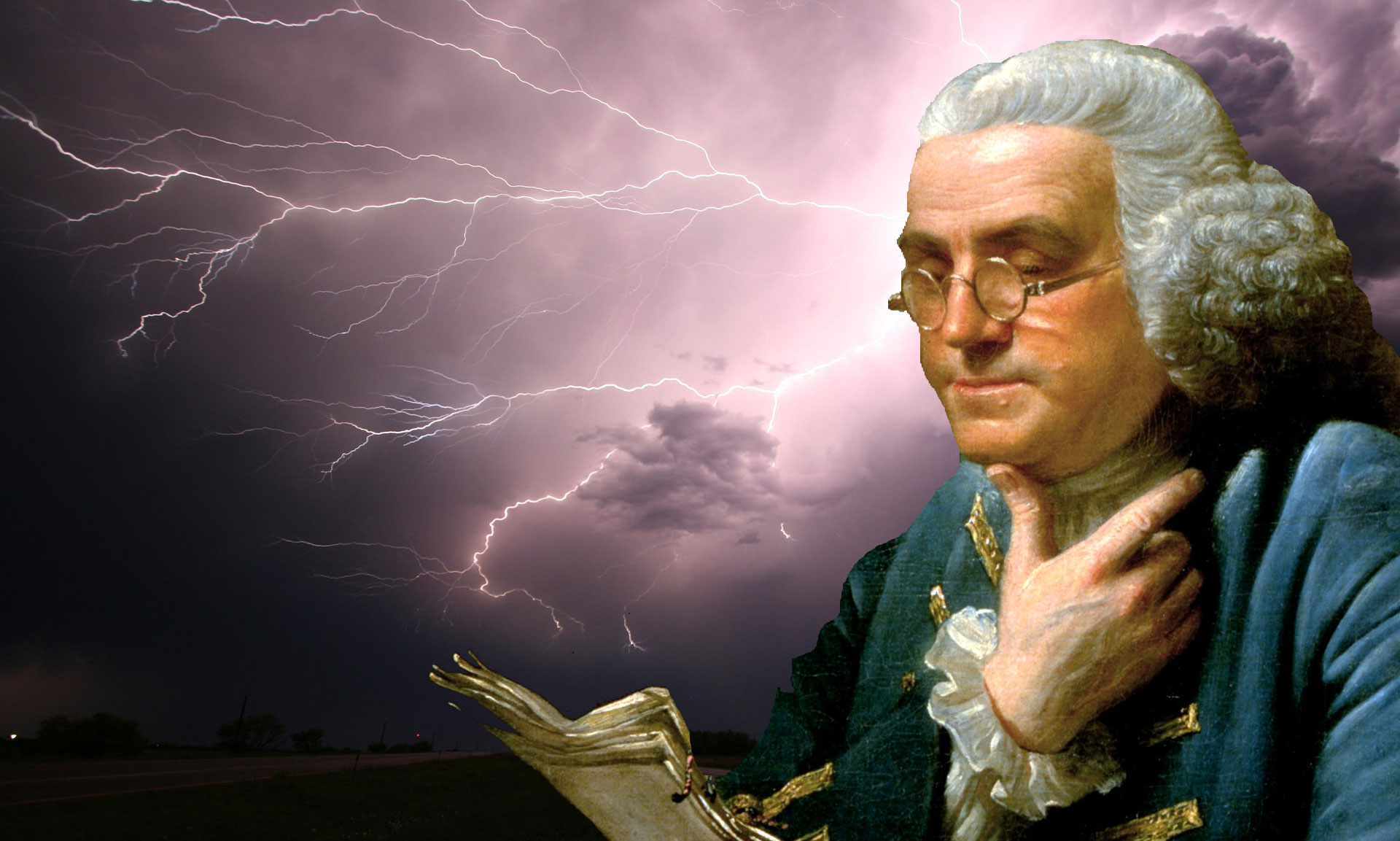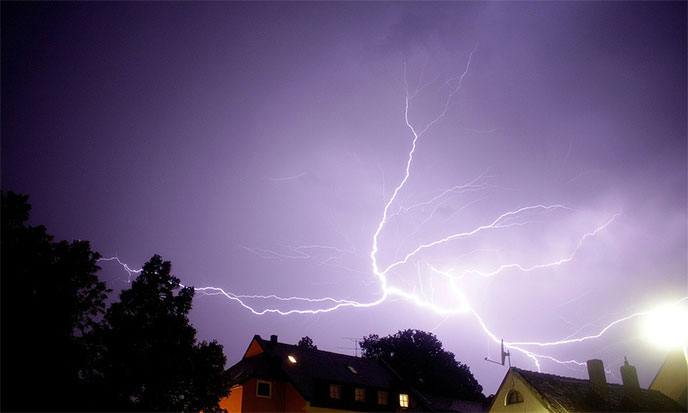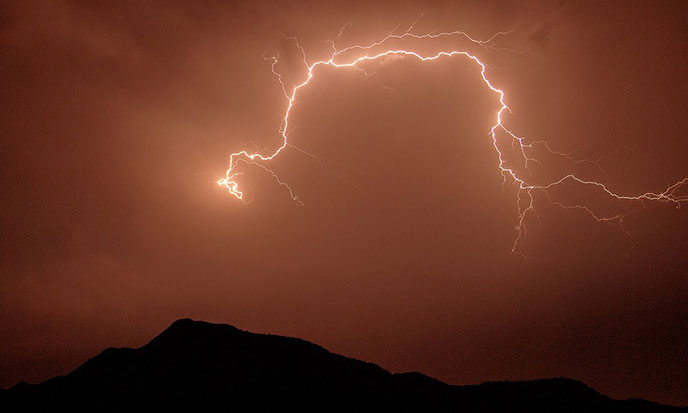
Each day, the lightning strikes the Earth five million times. At every moment in the world, there are several thousand of thunderstorms simultaneously. This represents up to three hundred flashes per second.
From the standpoint of science, what is lightning?
The storms are formed from water and heat. Clouds are the celestial power plants where lightning develops. The cumulonimbus, anvil-shaped, has the highest vertical extension, so the largest temperature difference between bottom and top, which made of it the typical storm cloud. The clouds consist of water vapor, under the form of a myriad of droplets.
When the drops become too heavy to remain airborne, they fall: this is the rain. The smaller droplets rise and under the action of cold they crystallize: this is ice. The crystals assemble into hailstones that fall through the vast mass of the cloud.
The hailstones, which have a negative polarity, collide with the droplets, which are positive. The cloud has a positive charge in its upper part, and negative in its lower part. It forms a huge battery. And it thunders, it goes up, it gushes. The storms are not equally distributed over the globe. In the U.S.A, a “corridor of lightning” is particularly struck by lightning. But it’s Bogor on Java Island, which holds the world record of storms. The sky thunders 322 days a year over there. At present, nobody can say why.

As for globular lightning, meteorologists have just admitted its existence. It must be said that research on lightning started only in 1752 with the invention of the lightning rod by Benjamin Franklin…
Lightning is a discharge of 100 MV, an intensity of 30 KA and a temperaure of 27,000°C, hotter than the surface of the sun. As there are 100 of them per second, the energy of lightning has an enormous planetary potential. The instant equivalent of a nuclear power plant with four phases, and without any nuclear waste, what is advantageous. This counting only the lightnings that hit the ground.
For the climatologists estimate that 90% of lightnings do not beat down on Earth, but remain in the cumulonimbus clouds, where they form the sheet lightnings. The global potential of lightning energy would therefore represent ten times more electric current: 60 million Gigawatts per second. Totally free. The cumulonimbus clouds are real lightning power plants!
In these times of energy shortages and combat against all forms of pollution, why not use this almost inexhaustible source? Maybe because we do not know. It is true that geo-electricity, much less dangerous, does not interest either our engineers. Highlighted by the awesome Tesla more than 100 years ago, we continue to ignore it. Only devote it, in Asia, the followers of Feng Shui, and among us, the geobiologists. But their work is not recognized by the scientific community…
Moving from one cloud to another at a speed of 62,500 miles per second, these air flashes form ribbons, chaplets, fascinating trees stretching sometimes over 100 miles.

This explains why the lightnings can fall into an area where the characteristic storm clouds, the anvil-shaped cumulonimbus clouds, are not yet present. This also shows that we can attract lightning in any weather, provided to accumulate in a relief the electric potential sufficient to create a polarity. Lightning produces other lesser-known phenomena, such as blue jets, elves, goblins or red sprites, and fire balls. These conditions have been often sought by our distant ancestors. They have developed the natural contours, peaks or mountains, as Machu Picchu. They laid out artificial hills with terraces, as at Avebury.
They have raised high towers and spires on the medieval cathedrals. They have erected obelisks and built pyramids. They have crowned the sacred buildings with lightning rods, as the House of Life of Uruk or Solomon’s Temple.
To polarize their lightning sensors, they even invented the electric battery. A building such as the artificial hill of Silbury presents the internal structure of an accumulator: this hill could be a giant electric battery. Today we still feel the energy welling out places where it once flowed thoroughly. Everything goes, everything returns ; this power will return too.


